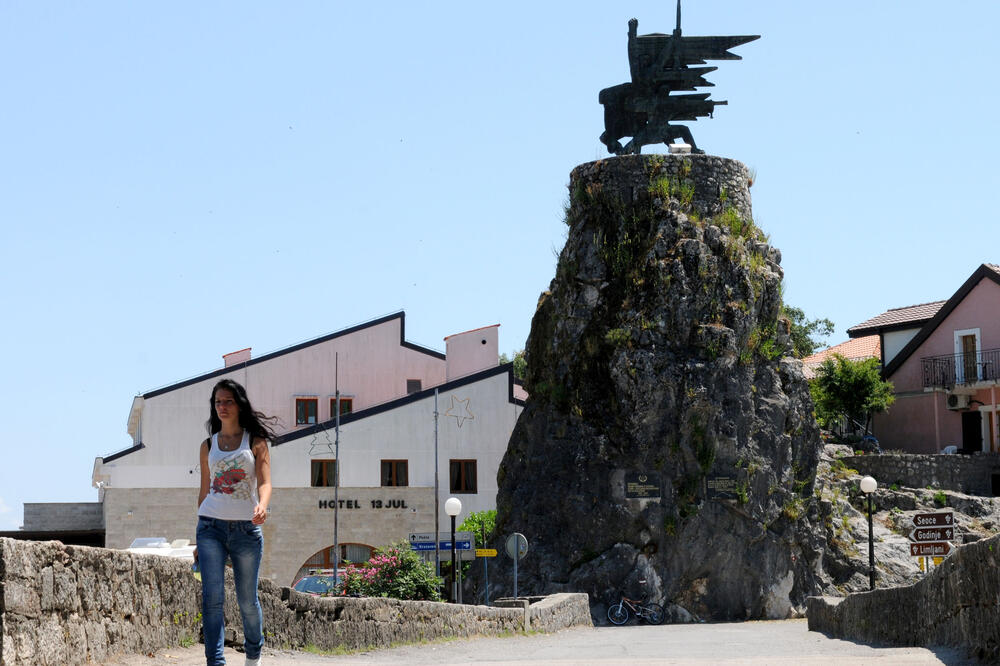A beautifully conceived and realized supplement in the holiday issue of Vijesti dedicated to anti-fascist monuments in Montenegro provided an opportunity for several interesting insights.
Most of these monuments were created after the Second World War in a system that was ideologically based on that war victory. It is important to be aware of this because the memorial fund is something that perhaps most accurately depicts the spirit of an era, its cultural profile and the aspirations of a society.
In the broadest sense, monument policy always represents the current cultural model. Without going into the events themselves that were the cause of the markings or their political, historical or other genesis, here we are therefore talking about the concept of marking - suggested memory, let's call it that. And then you clearly see, looking at the monuments, how an epoch saw itself and what it considered important, instructive in the most basic sense. Which was what they believed they had to hand down intact to posterity.
Again, it is important to be aware of the fact that the very concept of a classical monument has something of a proto-religious impulse, the monument, even in ancient times, was the shortest and, people believed, the most reliable way to the so-called immortality.
Recently, a monument to an exceptional female partisan was demolished. It is unusual, but it seems that the "wind" has also started to do what the young right-wingers do. That wind can do what no other wind can do, one would say. Primitive and deeply disturbing attacks on anti-fascist monuments in Montenegro have been very frequent in recent months, but it's obvious that the only problem is not the pissers and vandals. It is only the freshest layer of a sad story.
And how and when did this situation come about? With such strong anti-fascist rhetoric of the recent government, one would think that in the three decades of their leadership, at least the anti-fascist monuments were properly looked after. But, precisely at that time, those monuments grew into weeds, decayed and were humiliated... How can you trust such anti-fascism? They made a parody and mockery of everything they swore by - Yugoslavia, Montenegro, anti-fascism and the European idea. Unfortunately and unfortunately for Montenegro, that was the basic measure of their real (not rhetorical) action.
Flip through the mentioned appendix - among the monuments created in the XNUMXs, XNUMXs and XNUMXs of the XNUMXth century, the tone that dominates there, despite a clear ideological profile, is quite modernist. (An interesting detail is the absolute dominance of the Cyrillic alphabet, obviously it was more "equal" back then.)
If we compare the period of the so-called transition and its monument policy with the SFRY era, the result is devastating for this society. It doesn't seem to be moving forward at all. Even the opposite. Academic kitsch dominates, and the tone is set by freakish gifts (Pushkin, Vysotsky, an Azerbaijani poet)... It is clear that there is no longer a clear idea and attitude in the monument policy.
None of the new monumental sculptures in an aesthetic sense can be compared to Stanić's Jovan Tomašević. Or, how superior the monument in Gorica is compared to some similar attempts. Then you have a diverse scene - the greats (Kana and Bogdan) are also represented, and there are also the interesting and consequent abstract-modernist approaches of S. Vukajlović, M. Vuković, A. Markuš... Today, everything is in the sign of kitsch realism and nothing is in sight behind the bare mimetic intention.
One of the atypical exceptions (which fortunately there are) is an interesting monument to the local original in Herceg Novi.
Admittedly, not only the monumental paradigm, but also the paradigm of politicians has undergone serious and significant transformations in our time.
Here, Bato wants to return the land to Karađorđević. The whole, one would say. Bordered by spiritual topos like trumpeters, it has become a walking monument to ignorance, incompetence and all the worst that Budva has experienced in recent decades.
It seems that the transition brought a monument to the original to Budva as well. And mobile...
Bonus video:





